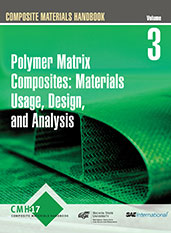Book

Structural Composite Materials
2010-01-01
This book deals with all aspects of advanced composite materials: what they are, where they are used, how they are made, their properties, how they are designed and analyzed, and how they perform in-service. It covers both continuous and discontinuous fiber composites fabricated from polymer, metal, and ceramic matrices, with an emphasis on continuous fiber polymer matrix composites. A unique feature of this book is that it provides a comprehensive overview of composite materials from an industrial perspective, drawing on the author’s 38 years of industry experience. The book emphasizes practical aspects over theory, and it thoroughly covers the current state of the art.








